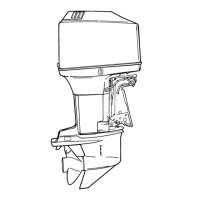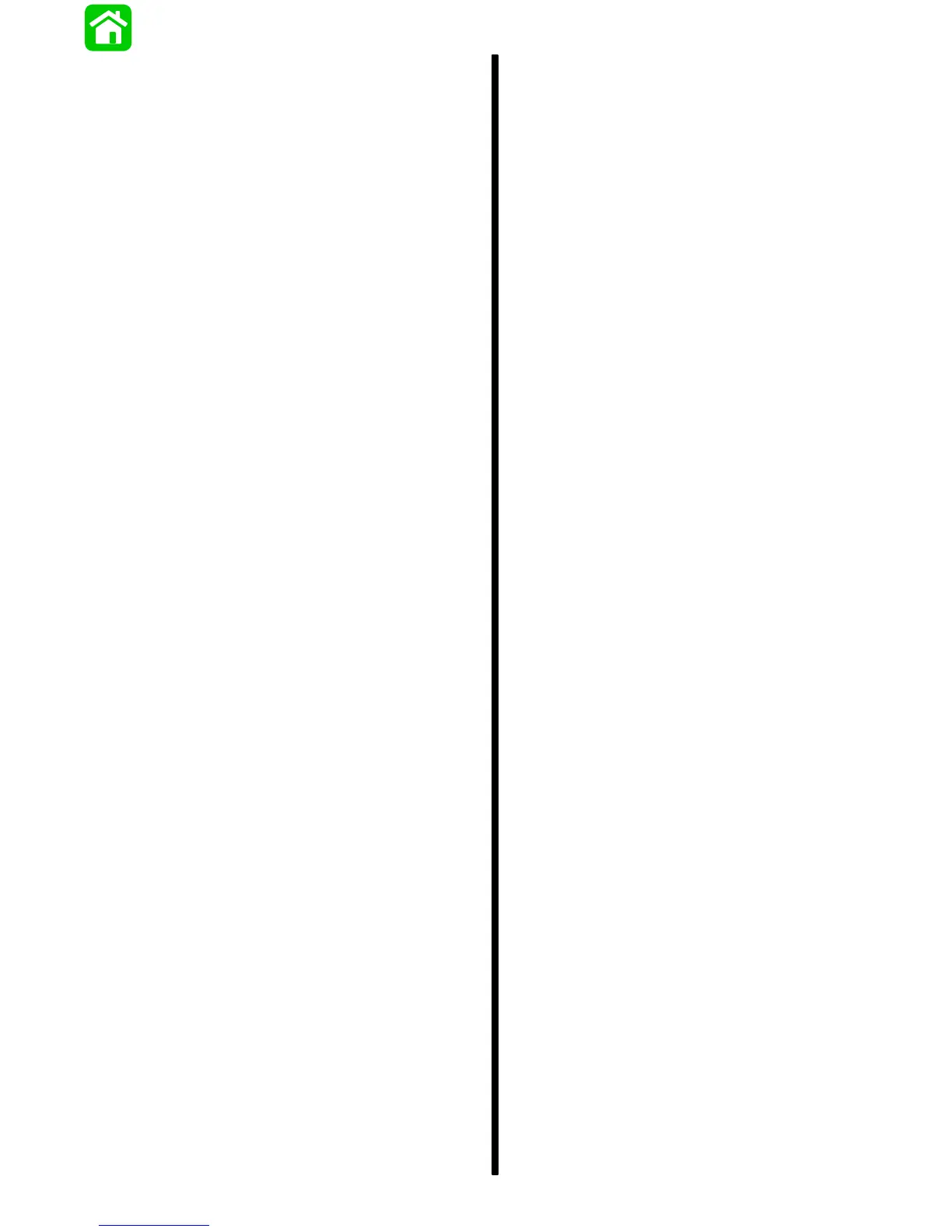90-824052R3 JUNE 2002 FUEL SYSTEMS - 3C-15
Fuel Flow Components (from
Fuel Flow Diagram)
A description of each component (on diagrams)
will aid in the diagnosis of EFI problems.
PULSE FUEL PUMP (K)
The pulse fuel pump, mounted on the crankcase,
delivers fuel through the water separating filter to the
vapor separator. Typical fuel pressure (at 5000 RPM)
is 6 to 8 psi.
WATER SEPARATING FILTER (J)
The Water Separating Filter protects fuel system
components from water and debris. The filter
contains a sensor probe which monitors water level
in the filter. If water is above sensor probe, a red light
on water sensing module will illuminate triggering a
series of beeps from the warning horn.
VAPOR SEPARATOR (M)
The vapor separator can be considered a fuel reser-
voir which continuously blends and circulates fresh
fuel, oil, and unused fuel/oil from the fuel rail.
* Fuel Inlet - fresh fuel delivered to system.
* Oil Inlet - oil delivered from oil reservoir.
* Crankcase bleed Inlet - recirculated fuel (unburned)
delivered from bleed lines at low RPM.
* Fuel pressure regulator Inlet - fuel being recircu-
lated through the fuel rail loop.
The fresh fuel delivered to the vapor separator is
controlled by a needle/float device (h) located in the
vapor separator.
BLEED SYSTEM (F, C,B)
Unlike carbureted engines, the unburned excess fuel
from crankcase is combined together through the
bleed system to the vapor separator. The bleed
system flow is closed off to the vapor separator
during off idle speeds by the bleed shut off valve. The
bleed shut off valve is activated by throttle linkage on
the manifold. At idle speeds the flow can be close to
1000cc’s of gasoline per hour. Also, a small filter (30
micron) is installed in the bleed line to keep
contaminants from entering the vapor separator. If
the filter becomes clogged the engine will be prone
to load up at idle speeds and hesitate upon
acceleration.
ELECTRIC FUEL PUMP (O)
The electric fuel pump is continually providing fuel in
excess of engine demands. The excess fuel
circulates through the fuel rail back to the vapor
separator. With the key in “run” position (engine off),
the ECM signals the pump to run for approximately
30 seconds then shut off. With the key in run position
(engine running), the ECM determines pump speed
(2 speeds) depending on RPM. During low speed
operation pump is at low speed.
FINAL FILTER (Q)
The final filter is located above the electric fuel pump.
The filter collects debris flowing from the electric fuel
pump to the fuel rail and can withstand blockage up
to 50% and still allow adequate fuel flow.
FUEL INJECTOR (V,W,X)
The fuel injectors are located inside the induction
manifold on the fuel rail. The injector valve body
consists of a solenoid actuated needle and seat
assembly. The injector receives signals from the
Electronic Control Module. These signals determine
how long the needle is lifted from seat (pulse width)
allowing measured fuel flow. The pulse width will
widen (richer) or narrow (leaner) depending on
various signals received from sensors connected to
the ECM. The ECM receives signals from primary
ignition circuit one, three and five to fire each “pair”
of injectors accordingly.
FUEL PRESSURE REGULATOR (S)
The fuel pressure regulator is located on top of the
vapor separator and is continuously regulating fuel
pressure from the electric fuel pump. The electric fuel
pump is capable of producing 90 psi (621 kPa) of fuel
pressure. The pressure regulator regulates fuel to in-
jectors down to a usable 36 to 39 psi (248 to 269 kPa).
INDUCTION MANIFOLD
The induction manifold is a common plenum
chamber for accurate pressure measurement. It
contains four throttle shutters on two throttle shafts.
The shutter opening (idle air opening) can be
adjusted during EFI set-up procedure. The manifold
contains the fuel rail, injectors, throttle position
sensor and air temperature sensor. A fuel rail
pressure port (q) is located on the final filter housing.

